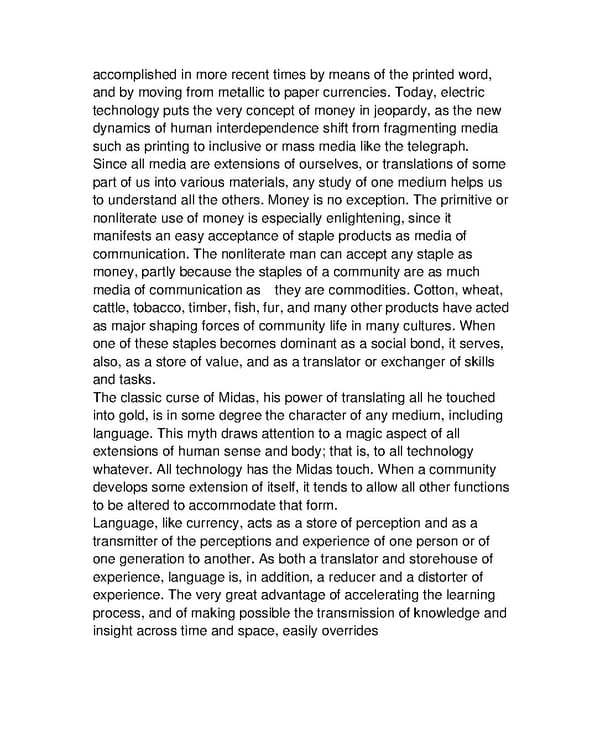accomplished in more recent times by means of the printed word, and by moving from metallic to paper currencies. Today, electric technology puts the very concept of money in jeopardy, as the new dynamics of human interdependence shift from fragmenting media such as printing to inclusive or mass media like the telegraph. Since all media are extensions of ourselves, or translations of some part of us into various materials, any study of one medium helps us to understand all the others. Money is no exception. The primitive or nonliterate use of money is especially enlightening, since it manifests an easy acceptance of staple products as media of communication. The nonliterate man can accept any staple as money, partly because the staples of a community are as much media of communication as they are commodities. Cotton, wheat, cattle, tobacco, timber, fish, fur, and many other products have acted as major shaping forces of community life in many cultures. When one of these staples becomes dominant as a social bond, it serves, also, as a store of value, and as a translator or exchanger of skills and tasks. The classic curse of Midas, his power of translating all he touched into gold, is in some degree the character of any medium, including language. This myth draws attention to a magic aspect of all extensions of human sense and body; that is, to all technology whatever. All technology has the Midas touch. When a community develops some extension of itself, it tends to allow all other functions to be altered to accommodate that form. Language, like currency, acts as a store of perception and as a transmitter of the perceptions and experience of one person or of one generation to another. As both a translator and storehouse of experience, language is, in addition, a reducer and a distorter of experience. The very great advantage of accelerating the learning process, and of making possible the transmission of knowledge and insight across time and space, easily overrides
 Understanding Media by Marshall McLuhan Page 155 Page 157
Understanding Media by Marshall McLuhan Page 155 Page 157